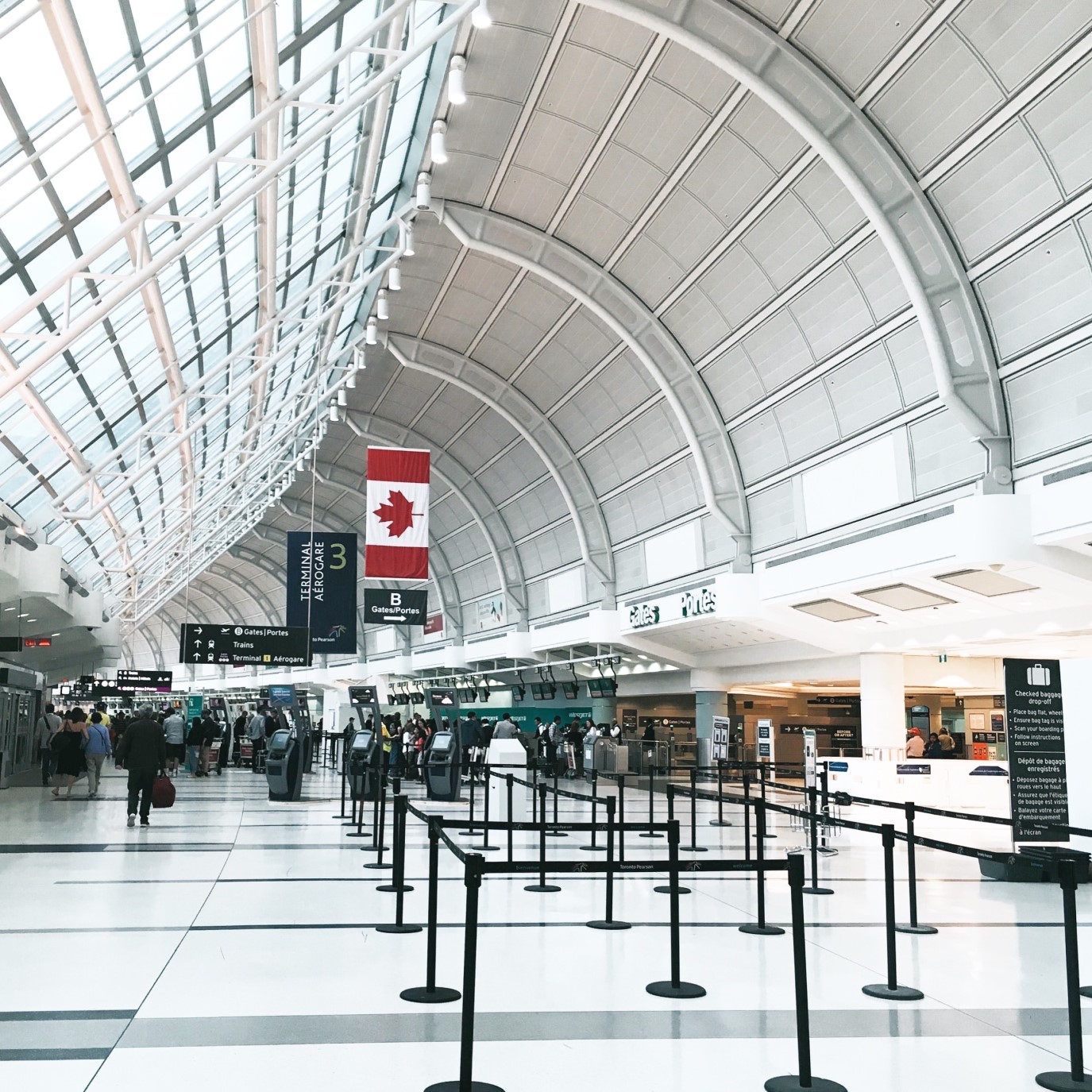Read this article as part of my travel column on Divine.ca. What It Is Like To Fly Internationally During COVID-19
I have my first international trip in almost two years under my belt. I’d be lying if I didn’t say that getting on that plane was emotional – in a good way. As a travel writer that did not travel, I’d begun to question my entire existence but that’s a story for my therapist. Asking my Uber driver to head to Terminal 3 gave me a sense of both calm and elation all at once.
The airport wasn’t busy at all – which makes sense as technically we are still traveling for essential purposes only. (It is at this time that I would like to specify that my trip was for work). A general lack of people meant that line ups were short, social distancing was possible and touch points were limited. In fact, I’ve never seen the airport cleaner.
There were three things that I needed to get on a plane leaving Canada:
- A passport
- A negative COVID-19 test
- Proof of vaccination
I printed off the two latter documents which made it easy to present when necessary. Funnily enough, no one asked to see either until I reached the gate. Here is the small print surrounding each of these documents:
- Must be more than 6 months from expiration date.
- Must be a molecular COVID test taken within 72 hours of your departure. (These tests cost upward of $150 CDN).
- Depending on your destination, certain vaccine combinations may not be recognized. I highly recommend checking the entry guidelines for any destination you plan on visiting. This can change day to day so please check regularly.

The plane was clean, and we were given disinfectant wipes on boarding. To be honest, even pre-COVID, I wiped down my airplane seat (especially the tray), but it was nice to see airline staff participating in these health measures. Overall, it was an ideal experience for ‘getting back on the travel horse.’
The trickier part is getting back in the country. Here is what you need:
- A Passport What It Is Like To Fly Internationally During COVID-19
- A negative PCR or NAAT COVID test
- Proof of vaccination
- Receipt code from the ArriveCAN app
Unlike Toronto Pearson airport, we were not getting past check-in/bag drop without these four documents. Quite a few of the other passengers weren’t aware of the ArriveCAN app so consider this your fair warning. Here is the small print regarding each of these documents:
- As above.
- Ensure that you book a molecular covid test – the only test accepted at the Canadian border. The wrong test can leave you with a hefty fine and forced quarantine. It can be difficult to find COVID testing facilities at your destination. Luckily, many hotels and resorts offer in room pre-travel COVID testing. Find out your options as soon as you arrive so you aren’t scrambling to find a testing site. Note that these tests are pricey (upward of $199 USD) so build that into your budget.
- I recommend keeping a printed copy of your vaccine receipt in your passport, so it is always available. Some people choose to laminate their receipt which is also a great idea.
- Make sure you download the ArriveCAN app before you leave the country. Before you head to the airport, the app requires you to fill out a survey. You will need to upload proof of vaccine, proof of your negative COVID test and to comprise a quarantine plan, should that be necessary. Based on your answers, the app will create a unique code that must be shown to airline agents in your departure destination and custom agents on arrival. You cannot enter Canada without this code. What It Is Like To Fly Internationally During COVID-19
When customs agent asked for our receipt code, he made a few notes and put a green sticker on our passports. Once we collected our bags, we flashed our green sticker, walked through the departure doors and went home.
This was not true for everyone. What It Is Like To Fly Internationally During COVID-19
For those passengers not fully vaccinated, they were directed to an onsite COVID testing booth in the terminal. From there they were tested, given quarantine instructions, and some were given rapid tests to take at home in 3-5 days. Of the fully vaccinated passengers, one or two were randomly selected for the same procedure.
Overall, traveling internationally was a smooth procedure, so long as one was fully vaccinated and aware of the required documentation at every border. The COVID tests are a very pricey endeavour but necessary to protect one another from this nightmare virus continuing to attack Canadians.
Would I travel again? Depends. If there is one thing we know about COVID-19, it’s that we just don’t know.

